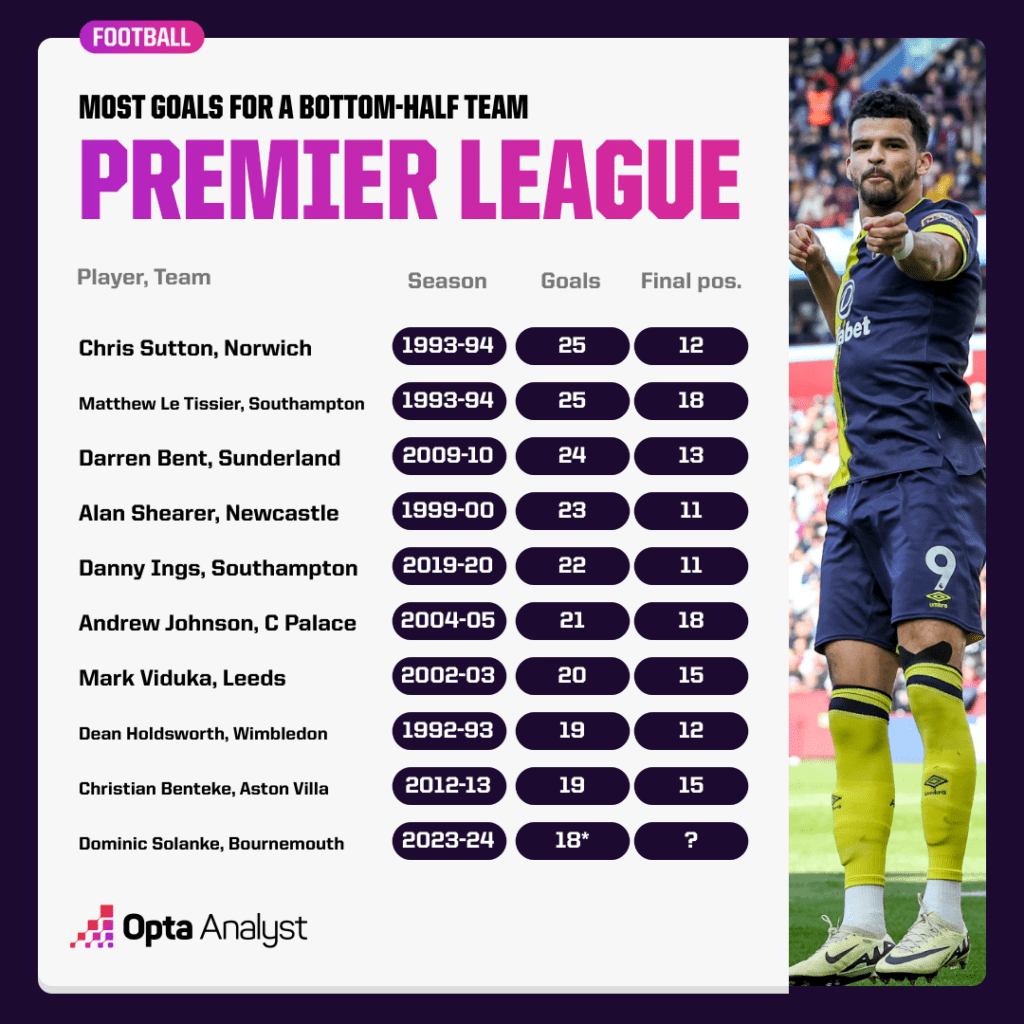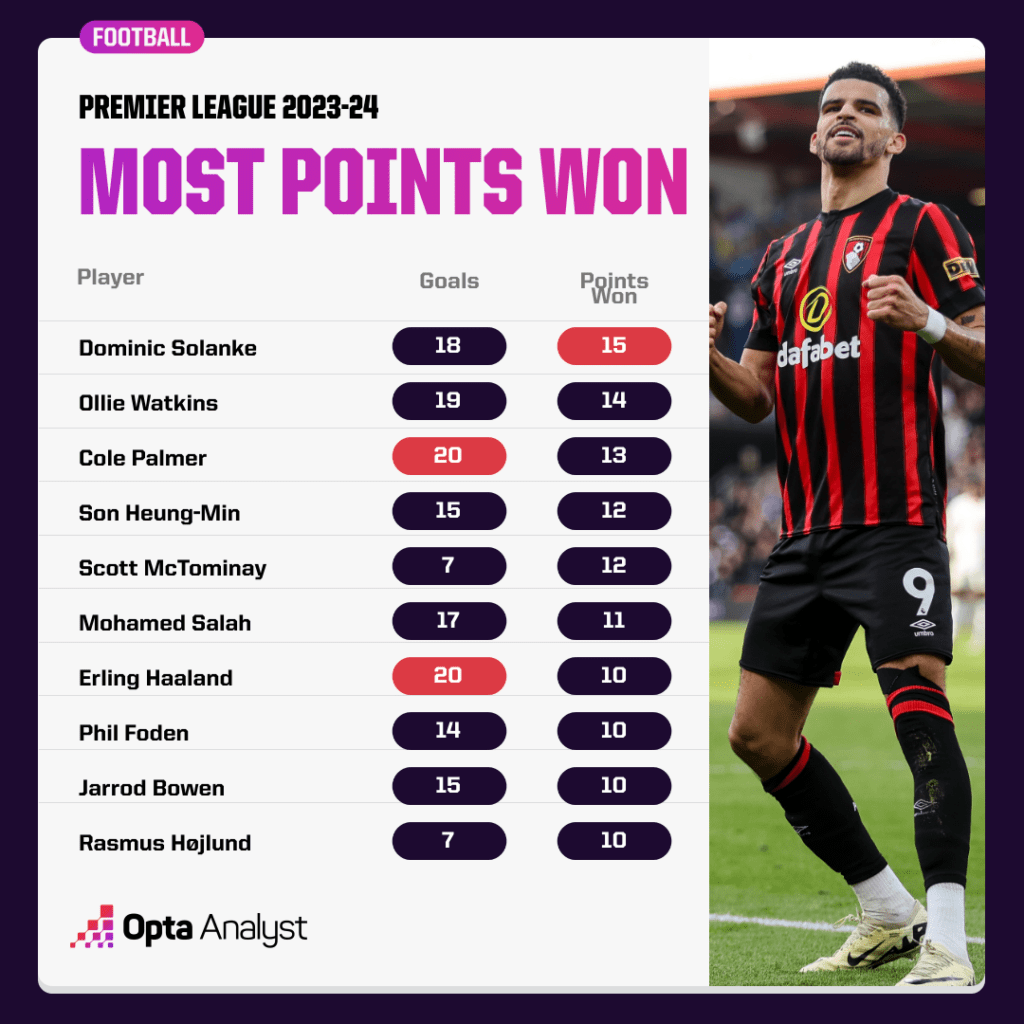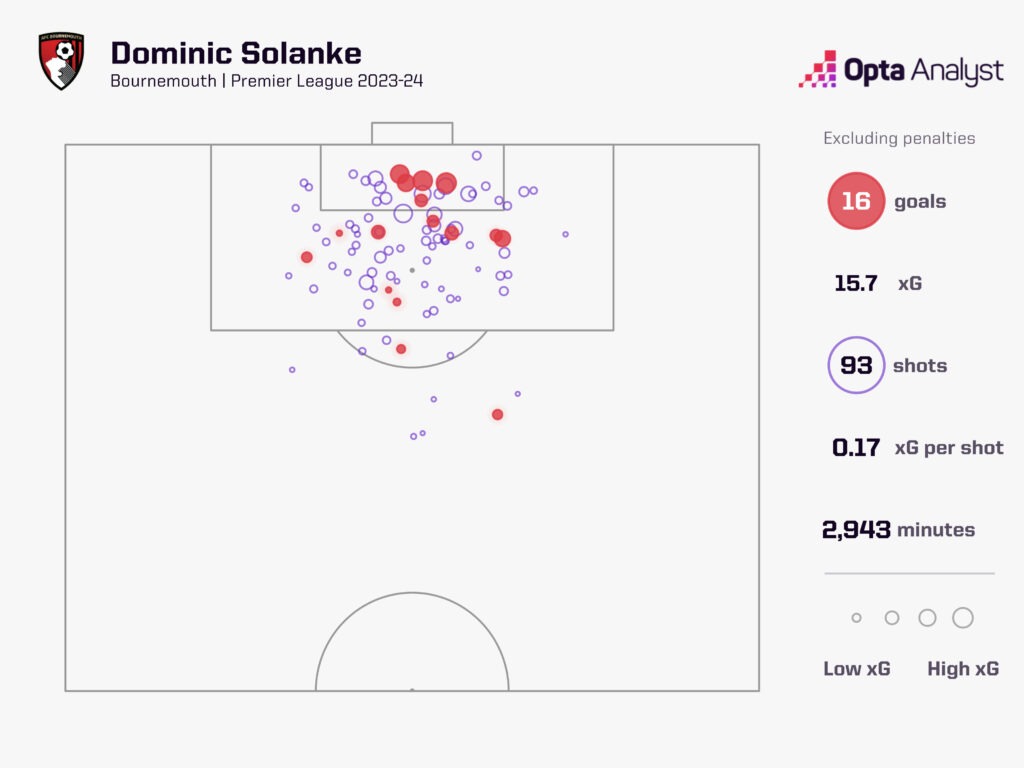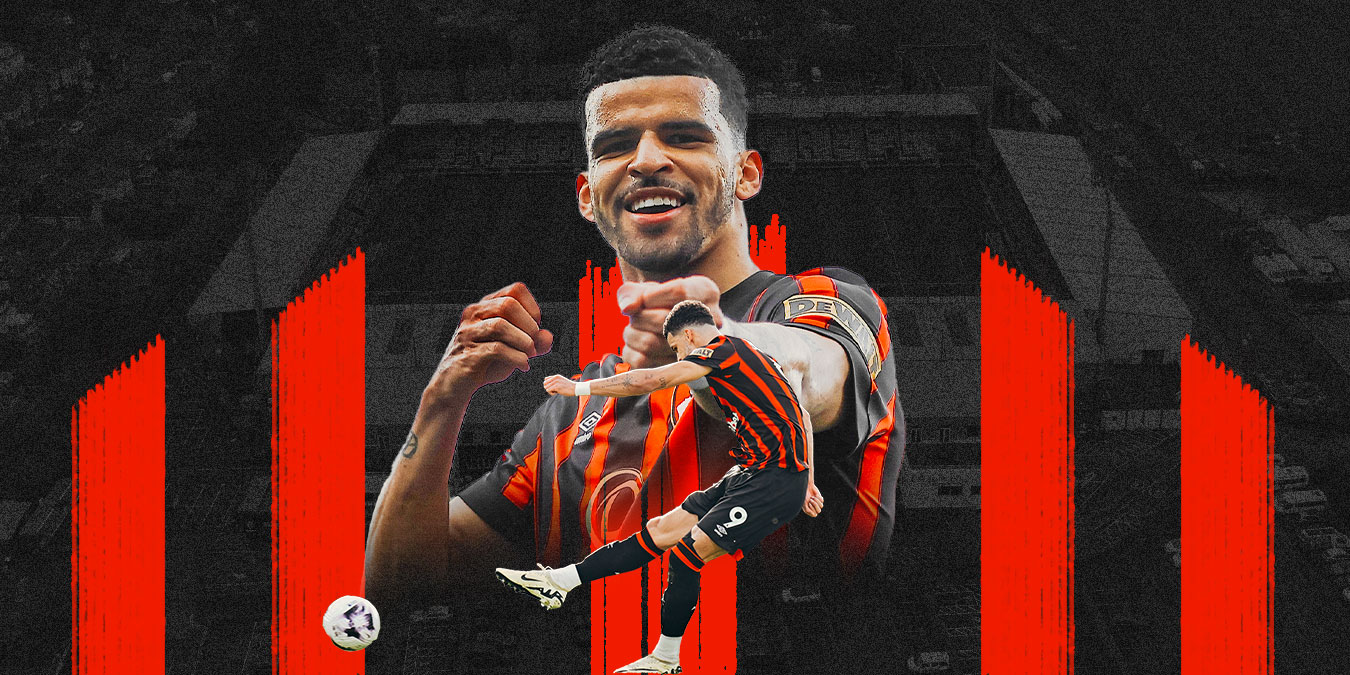Dominic Solanke is having one of the most prolific seasons in Premier League history for a bottom-half team. But could he be playing at the other end of the table before long?
For Dominic Solanke, 2023-24 has been a big season.
Having tried – and, ultimately, failed – to succeed at two of England’s biggest clubs in Chelsea and Liverpool, he had done little in the five years since leaving Anfield to prove he could make it at the top of the game.
He had stormed the Championship in 2021-22 but followed up a 29-goal second-tier promotion campaign with just six goals in the top flight, with his 2022-23 including a drought of 17 hours and 20 minutes without a league goal.
Another year like that this season and Solanke would have been in real danger of becoming one of those ‘too good for the Championship, not good enough for the Premier League’ players who never really gets the respect they might do given they play in the top tier.
But this year he has gone from strength to strength under Andoni Iraola, a manager whose style has proved perfectly suited to Bournemouth’s number nine.
That front-footed style, with an aggressive press and a decent share of possession, will have helped prepare Solanke for life back at a bigger club. With all due respect to Bournemouth, after the season Solanke has had, he couldn’t be criticised if he were dreaming of bigger things.
At 26, there’s no desperate need to be in a rush about it, but having played in the Champions League aged 17 – when he became the youngest player in Chelsea’s history to appear in the competition – and with just one England cap to his name – which came some seven years ago – he may want to strike while the iron is hot.
Solanke has indeed been in red-hot form this season. His recent goal against Manchester United was his 17th, making this the highest-scoring season by a Bournemouth player in the Premier League, overtaking Joshua King, who hit 16 in 2016-17. Solanke then added an 18th against Aston Villa at the weekend, and still has five more games in 2023-24 to further increase his tally.
Bournemouth are still very much in the running for a top-10 finish – just two points (but three places) off Brighton in 10th – but despite an impressive run of form through the middle of the season, they are more likely to end the season in the bottom half of the table. The Opta supercomputer suggests 13th is their likeliest final position.
If they finish 11th or lower, Solanke will be only the 15th player in Premier League history to score as many as 18 goals for a bottom-half team. He has every chance of joining a seven-man club of players who have hit 20 goals for a team in the bottom half.

It’s become increasingly rare for teams who finish low down the table to have a high-scoring individual. In the Premier League era, there have been 38 instances of a player finishing in the bottom half having scored 15+ goals, but only two of those have occurred in the last seven seasons – Solanke this season and Danny Ings for Southampton in 2019-20.
That means it happened 36 times in the first 25 Premier League seasons, but only twice since. These days, having a 15-goal striker usually means a top-half finish. Solanke’s form has certainly been worthy of finishing in the top 10.
He has been in some sense rather let down by his teammates. He is fourth in the Premier League goalscoring charts this season, only two behind Cole Palmer and Erling Haaland on 20, and leads the way for scoring the first goal of a game, having done so at least two more times than anyone else (9; Palmer and Haaland – 7 each).
However, after he scored the opening goal in Sunday’s 3-1 defeat at Aston Villa, he has been on the losing side after claiming the first goal in three separate matches this season. Only once before in the Premier League era has a player lost more games in a season having scored the opener (Dion Dublin, four in 1995-96). It’s an unwanted record that Solanke and Bournemouth could yet match in 2023-24.
But he has also contributed goals at key times, and plenty of Bournemouth’s games have been tight affairs settled by the odd goal. That has meant Solanke’s have been incredibly valuable. Take his goals away from Bournemouth’s season, and they would have 15 fewer points – his goals have been worth more points than any other player in the Premier League this season.

He has become a more single-minded forward this season, tasked by Iraola with staying in central attacking areas for longer periods and providing a greater goal threat. It will come as little surprise that he is averaging far more non-penalty goals (0.49), non-penalty expected goals (0.48), shots (2.9), and touches in the opposition box (6.5) per 90 minutes played than in any other season since he joined Bournemouth.
When it comes to totals for these numbers, he ranks second of all Premier League players for for non-penalty goals (16) and non-penalty expected goals (15.7), fourth for shots (96), and fifth for touches in the opposition box (211).
These are elite-level numbers and he is in elite company with the Premier League’s best on each front. His numbers this season suggest he could be ready to step back up to a bigger side and compete at the right end of the table.
He isn’t yet an elite finisher (and may well never be), outscoring his non-penalty xG by just 0.3 over the course of the season. But he has improved remarkably when it comes to the goalscoring positions he is getting into – which accounts almost entirely for the vast increase in his output in front of goal this term. (He scored six non-penalty goals from 9.2 xG in 2022-23.)

And while elite finishing is obviously a massive plus in a striker, it is arguably the ability to get into good positions close to goal that is more important in the modern game. The top scorer at the three title-chasing sides this season, for example, are all underperforming their non-penalty xG (Haaland – 16 goals from 19.8 non-penalty xG; Mohamed Salah – 12 goals from 12.8 non-penalty xG; Bukayo Saka – 9 goals from 9.5 non-penalty xG).
Of course, any of those teams would be faring better if their biggest goal threat was outperforming their xG, but the point here is rather that they haven’t needed those players to do so to be in the title race.
Solanke has also shown he would be able to play for a big team that defends by pressing high up the pitch. He leads the Premier League this season for pressures (1,093), pressures in the final third (609) and pressures in the final third resulting in a turnover (133). Not only does he work extremely hard, but he also knows how to press to force a turnover of possession close to goal.
Having spent years at Chelsea and Liverpool, he knows what an elite club environment feels like, and he will know better than most other 26-year-olds what it takes to succeed in an environment like that.
After a season like this, he may well believe it is time to grab a chance to move back to a big club if it comes along, particularly because he is likely to be watching Euro 2024 on television, yet to be given a proper chance by Gareth Southgate.
He may well have ambitions bigger than Bournemouth, and given Chelsea, Arsenal, Tottenham and Manchester United could all be looking for a new number nine this summer, there may well be interest in Solanke. Meanwhile, Liverpool’s new sporting director Richard Hughes signed Solanke at Bournemouth and may like the idea of signing him again.
The numbers suggest Solanke is ready to move back to a side at the top end of the Premier League.
Enjoy this? Subscribe to our football newsletter to receive exclusive weekly content. You should also follow our social accounts over on X, Instagram, TikTok and Facebook.
